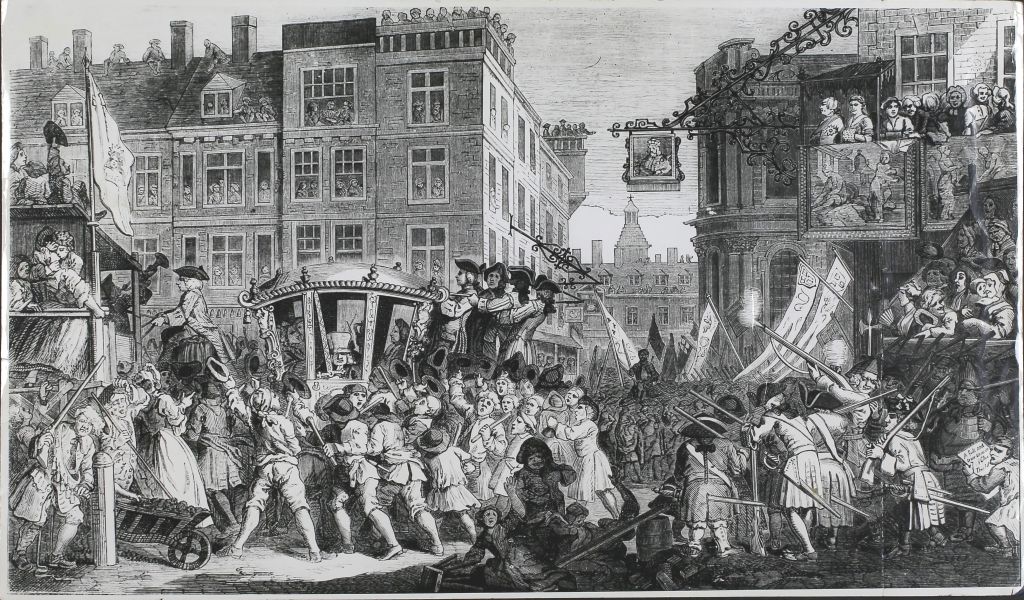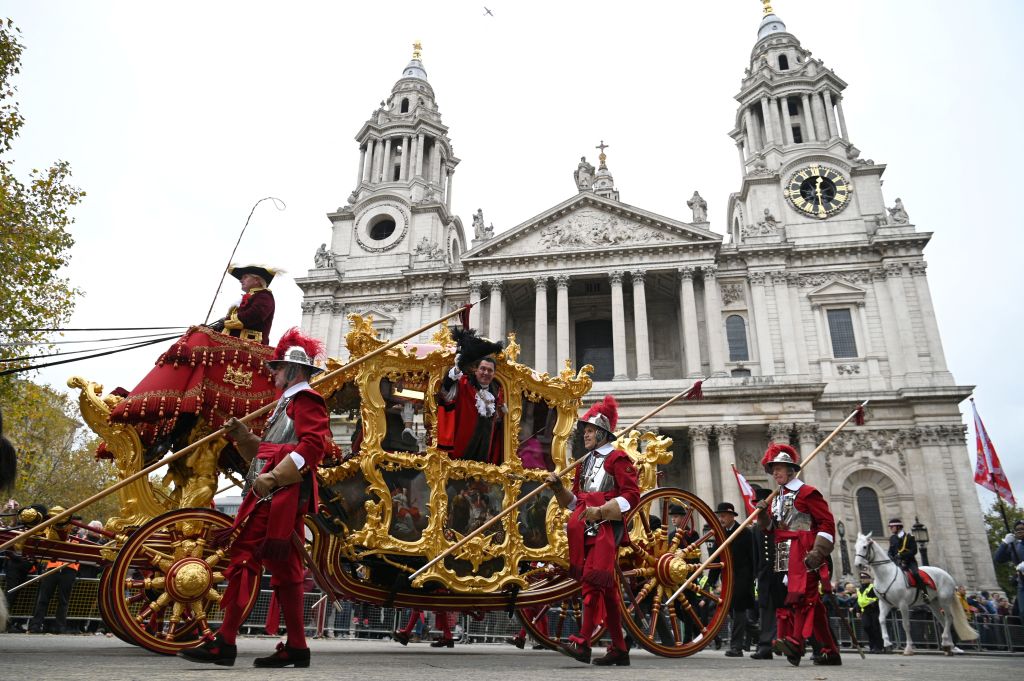The Lord Mayor’s Show is a mix of traditional buttoned-up pageantry and let-your-hair-down carnival. A bit like the state opening of parliament without all the MPs, and Notting Hill without the jerk chicken.
I am a Freeman of The Worshipful Company of Merchant Taylors, one of the ‘Great 12’ livery companies of the City of London. The Lord Mayor’s Show is an occasion in which the City’s livery companies – there are some 110 in all – have prominent place. What’s more, the incoming Lord Mayor has a special link to the Merchant Taylors as a member of the Company’s Court. Which is all a roundabout way of saying: I have been roped into today’s show to ride atop a camel.
I read Justin Marozzi in the hope of finding tips on how to tether said camel though, sadly, in vain. On the plus side, the weather looks set to be dry with sunny spells, which is as close to Saharan conditions as one can hope for in November. Nevertheless, having not been atop a camel since caving in to the advances of an entrepreneurial Bedouin in Giza when I was a teen, I am steeling myself for a bumpy ride.
The Lord Mayor’s many ancient duties and privileges include leading the annual sheep drive across London Bridge and the right to assist the royal butler serving drinks at the coronation banquet
There are various considerations. I had been wondering particularly about camel excrement. Am I expected, like any considerate denizen of the City (a Freeman no less!), to pick up the poo of my pet as we go along? I have now been told my focus should be on staying upright on the camel’s back and that some other distinguished citizen of the City has been lined up for the picking-up of poo. After the Lord Mayor’s Show comes the dust-cart, as the saying goes.
The show’s roots are ancient. This year, Alderman Nicholas Lyons is set to become the City’s 694th Lord Mayor. In the early 13th century, in an attempt to win over the City of London, the ill-fated King John allowed the City to appoint its own Mayor (‘faithful, discreet and fit for government’), instead of having a sheriff appointed by the King, on the condition that they come to Westminster each year to swear loyalty to the crown. The procession that grew up around the Mayor to accompany him for these annual journeys to the Royal Courts of Justice became known as the Lord Mayor’s Show.
As chief cheerleader of the City’s businesses and residents, international ambassador for the UK’s financial and professional services sector and head of the City of London Corporation, the Lord Mayor is – all ceremony aside – quite a hefty modern role. Lyons, on sabbatical from his position as chairman of the insurer Phoenix Group, will focus his term on boosting investment and growth and improving London’s global productivity under the theme ‘Financing our Future’.
But the more esoteric parts of the role are certainly not neglected. One of the many such ancient duties and privileges is leading the annual sheep drive across London Bridge. Another is the right to assist the royal butler serving drinks at the coronation banquet (the Mayor of Winchester meanwhile is entitled to assist the royal cook). Though, generally, the Lord Mayor is more the grand host than staff: The Lord Mayor’s Banquet (held on the Monday after the show) traditionally sees the Prime Minister do the keynote speech, while the Chancellor delivers the ‘Mansion House Speech’ at the bankers’ dinner in June and the Foreign Secretary takes to the lectern at the Easter Banquet. Certainly the host with the most.

That same mixture of the ancient and contemporary manifests itself in the show. There are this year more than 130 floats in all – comprising everything from cadet forces and businesses to ancient guilds and modern charities. Those places with a specific link to the new Lord Mayor (such as Wells-next-the-Sea, his hometown) are also included. It is all gloriously eclectic. Bands of the Scots Guards and Welsh Guards are first up and not far behind are Gog and Magog, wicker giants (made by the Worshipful Company of Basketmakers) that are the traditional guardians of the City. The Lord Mayor himself rides in the State Coach, commissioned in 1757 and said to be the oldest ceremonial vehicle in regular use in the world. It has gilded coachwork, and side panels painted by Cipriani ‘depicting London’s majesty, piety and global reach’.
The livery companies that form the heart of the procession are simultaneously a reminder of the City’s history and its modern purpose. Most maintain the connections with their original crafts. Originally an association of tailors, the Merchant Taylors for example is now chiefly a philanthropic and educational organisation – though still proudly maintains its links with Savile Row, nurturing the next generation of British tailors through the likes of the biannual Golden Shears competition, the Oscars of the tailoring world.

And the livery companies do not hastily throw off their ancient heritage. The Merchant Taylors’ Company is listed on the show’s website as in both sixth and seventh place in the procession – a fitting tribute to the Company’s centuries-old rivalry with the Skinners over their respective places in the livery companies’ order of precedence. In 1484, the then Lord Mayor, Sir Robert Billesden, settled the issue by deciding the two Companies should swap spots on an annual basis, an episode widely thought to have been the origin of the idiom ‘at sixes and sevens’.
This year, for reasons joyous and tragic, has given us no shortage of ancient ritual and pageantry, and reminded us that these public spectacles – at once solemn and frivolous – encapsulate something that is the very best about our country. The office of the Lord Mayor – and the show that celebrates it – is an example of an institution that has at once moved with the times to fulfil an important purpose, and held on to the best of its history. The show has been immortalised over the years: in Shakespeare, in art – from Canaletto to Hogarth – and in pantomime (Dick Whittington of course). Samuel Pepys thought the 1660 show a grand day out, where he met up with Lady Sandwich and all the children and drank some ‘strange and incomparable good clarett’. You could, and should, do the same. Here’s to a triumph of British pomp and ceremony today.






Comments